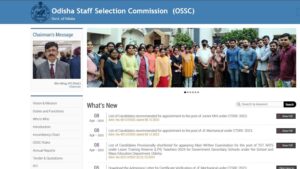Current Affairs 11th August 2023 for UPSC Prelims Exam
Securities Appellate Tribunal (SAT)
Context: The Securities Appellate Tribunal (SAT) has quashed the SEBI order directing the National Stock Exchange (NSE) to pay ₹62.6 crore with interest, in the dark-fibre case.
About Securities Appellate Tribunal (SAT)
- Definition: Securities Appellate Tribunal is a statutory body established under the Securities and Exchange Board of India Act, 1992.
- Composition: It consists of a Presiding Officer & Two other members.
- The Presiding officer shall be appointed by the Central Government in consultation with the Chief Justice of India or his nominee.
- Function:
- Its main function is to hear and dispose of appeals against orders passed by the Securities and Exchange Board of India, the Pension Fund Regulatory and Development Authority (PFRDA) and the Insurance Regulatory Development Authority of India (IRDAI).
- The Tribunal has the same powers as are vested in a civil court in the following matters:
- summoning and enforcing the attendance of any person and examining him on oath;
- requiring the discovery and production of documents;
- receiving evidence on affidavits;
- issuing commissions for the examination of witnesses or documents;
- reviewing its decisions
- Person aggrieved by any order or decision of Securities Appellate Tribunal can file an appeal to the supreme court.
Current Affairs 10th August 2023 for UPSC Prelims Exam
Interpol
Context: The CBI has arrested a person convicted in a bank fraud case after securing his return from the United States in close coordination with the Interpol.
About Interpol:
- Definition: The Interpol, or International Criminal Police Organization, is an inter-governmental organization comprising 195 member countries, which helps police forces in all these countries to better coordinate their actions.
- Composition:
- The General Assembly is Interpol’s governing body and it brings all countries together once a year to take decisions.
- The General Secretariat coordinates its day-to-day activities to fight a range of crimes.

- Function:
- It enables member countries to share and access data on crimes and criminals and offers a range of technical and operational support.
- In each country, an INTERPOL National Central Bureau (NCB) provides the central point of contact for the General Secretariat and other NCBs.
- An NCB is run by national police officials and usually sits in the government ministry responsible for policing.
- Interpol connects all its countries via a communications system called I-24/7.
- Countries use this secure network to contact each other, and the General Secretariat.
- It also allows them to access Interpol’s databases and services in real-time, from both central and remote locations.
- Headquarters: Lyon, France.
Types of Notices by Interpol
- Interpol issues 8 type of notices (7 of which are colour-coded) which are in the form of alert/requests allowing police in member countries to share critical crime-related information.
- Red Notice: To seek the location and arrest of a person wanted by a judicial jurisdiction or an international tribunal with a view to his/her extradition.
- It is the “closest instrument to an international arrest warrant”.
- Blue Notice: To locate, identify or obtain information on a person of interest in a criminal investigation.
- Green Notice: To warn about a person’s criminal activities if that person is considered to be a possible threat to public safety.
- Yellow Notice: To locate a missing person or to identify a person unable to identify himself/herself.
- Black Notice: To seek information on unidentified bodies.
- Orange Notice: To warn of an event, a person, an object or a process representing an imminent threat and danger to persons or property.
- Purple Notice: To provide information on modus operandi, procedures, objects, devices or hiding places used by criminals.
- Interpol-UNSC Special Notice: To inform Interpol’s members that an individual or an entity is subject to UN sanctions.
Contempt of Court
Context: Former Jammu and Kashmir Chief Minister recently stated that the remarks of a ruling party leader over Article 370 in Parliament were “tantamount to contempt of court”.
About Contempt of Court
- Definition: As per the Contempt of Courts Act 1971, contempt refers to the offense of showing disrespect to the dignity or authority of a court.
- Constitutional Provisions:
- Article 129: The Supreme Court shall be a court of record and shall have all the powers of such a court including the power to punish for contempt not only of itself but also of High courts, subordinate courts and tribunals functioning in the entire country.
- Article 142(2): Enables the Supreme Court to investigate and punish any person for its contempt.
- Article 215: Every High Court shall be a court of record and shall have all the powers of such a court including the power to punish for contempt of itself.
- Types: As per the Contempt of Courts Act 1971, contempt of court can either be civil contempt or criminal contempt.
- Civil contempt means wilful disobedience to any judgment, decree, direction, order, writ or other process of a court, or wilful breach of an undertaking given to a court.
- Criminal contempt consists of mainly three forms: Words, written or spoken, actions and signs that scandalize or tend to scandalize; tends to lower or lower the authority of any court; interferes or prejudices with any judicial proceeding, obstructs or interferes with the administration of justice.
- Punishments:
- According to the Act, contempt of court may be punished with:
- Simple imprisonment for a term which may extend to six months,
- With fine which may extend to two thousand rupees,
- With both imprisonment and fine,
- The accused may be discharged or the punishment awarded may be remitted on apology being made to the satisfaction of the court.
- According to the Act, contempt of court may be punished with:
Federal Funds Rate
Context: The Federal Open Market Committee in US has increased the targeted federal funds rate (FFR) to 5.25- 5 5%.
More on News
- Aiming to reduce inflation in the country by 2%, Federal Open Market Committee in US has increased the FFR, which is at a 21-year high.
- The Federal Open Market Committee (FOMC) is the branch of the Federal Reserve System (FRS) that determines the direction of monetary policy in the United States.
About Federal Funds Rate (FFR)
- The federal funds rate refers to the interest rate that banks charge other institutions for lending excess cash to them from their reserve balances on an overnight basis.
- Federal funds rate is set by the US Federal Open Market Committee (FOMC) based on prevailing economic conditions.
- Setting FFR is a part of monetary policy of FOMC, used to promote economic growth.
- It is currently set between 5.25% to 5.5%.
- The US FOMC tries to “target” the rate by controlling the money supply.
- As such, when the Fed wants to raise the prevailing interest rates in the US economy, it reduces the money supply, thus forcing every lender in the economy to charge higher interest rates.
- The process starts with commercial banks charging higher to lend to each other for overnight loans which is called monetary tightening.
Why is the Fed Tightening Money Supply?
- The Fed (or any other central bank, for that matter) resorts to monetary tightening when it wants to control inflation in the economy.
- By decreasing the amount of money, as well as raising its price (the interest rate), the Fed hopes to dent the overall demand in the economy.
- Reduced demand for goods and services is expected to bring down inflation.
What are the Risks of Monetary Tightening?
- Aggressive monetary tightening — like the one currently underway in the US — involves large increases in the interest rates in a relatively short period of time, and it runs the risk of creating a recession.
- This is called a hard-landing of the economy as against a soft landing (which essentially refers to monetary tightening not leading to a recession).
Global Impact of Raised FFR
- Monetary policy decisions in the U.S., such as raising interest rates, have a ripple effect in low-income countries because of the central role of the dollar in the global economy.
- Many emerging economies rely on the dollar for trade, and most borrow in the U.S. dollar – all at rates influenced by the Federal Reserve. And when U.S. interest rates go up, many countries and especially developing ones tend to follow suit.
- Currency Depreciation: Raising U.S. interest rates has the effect of making American government and corporate bonds look more attractive to investors. The result is that foreign capital flows out of developing economies that appear riskier.
- This pushes down the currencies of those nations and prompts governments in lower-income nations to mirror U.S. Federal Reserve policy.
- The problem is, many of these countries already have high interest rates, and further hikes limit how much governments can lend to expand their own economies – heightening the risk of recession.
- Debt Distress: Raising rates in the U.S. has impact on countries with large debts.
- When rates were lower, a lot of lower-income nations took on high levels of international debt to offset the financial impact of the COVID-19 pandemic and then later the effect of higher prices caused by war in Ukraine.
- But the rising cost of borrowing makes it more difficult for governments to cover repayments that are coming due now. This condition, called “debt distress,” is affecting an increasing number of countries.
- In May 2023, the World Bank had estimated that 60% of lower-income countries are in or high risk of entering debt distress.
- Increasing Poverty: Currency depreciation and debt distress can ruin the social fabric of developing countries by increasing poverty and income inequality.
- With the debt serving priorities on the borrowings undertaken by the governments accounting for a growing share of their expenditures, developing country governments are forced to cut down on expenditures on health and education, setting limitations on achieving targets on sustainable development goals ( SDGs).
- A recent report by UNCTAD estimates that 3.3 billion people live in countries where the interest payments are far higher than the total expenditure on health and education.
- Impact on NDCs: The recent International Debt Report of the World Bank remarks that the poorest countries which borrow through the International Development Association (IDA) wing of the World Bank now spend at least 10% of their export earnings to service the external debt incurred by their governments.
- Though keen on meeting their nationally determined contributions (NDC) relating to reduction of emissions, many are forced to cut short on their goals with respect to climate goals.


 Daily Quiz 18 April 2025
Daily Quiz 18 April 2025
 OSSC CGL Syllabus 2025 and Exam Pattern ...
OSSC CGL Syllabus 2025 and Exam Pattern ...
 AI and its Regulation in India, Limitati...
AI and its Regulation in India, Limitati...





















